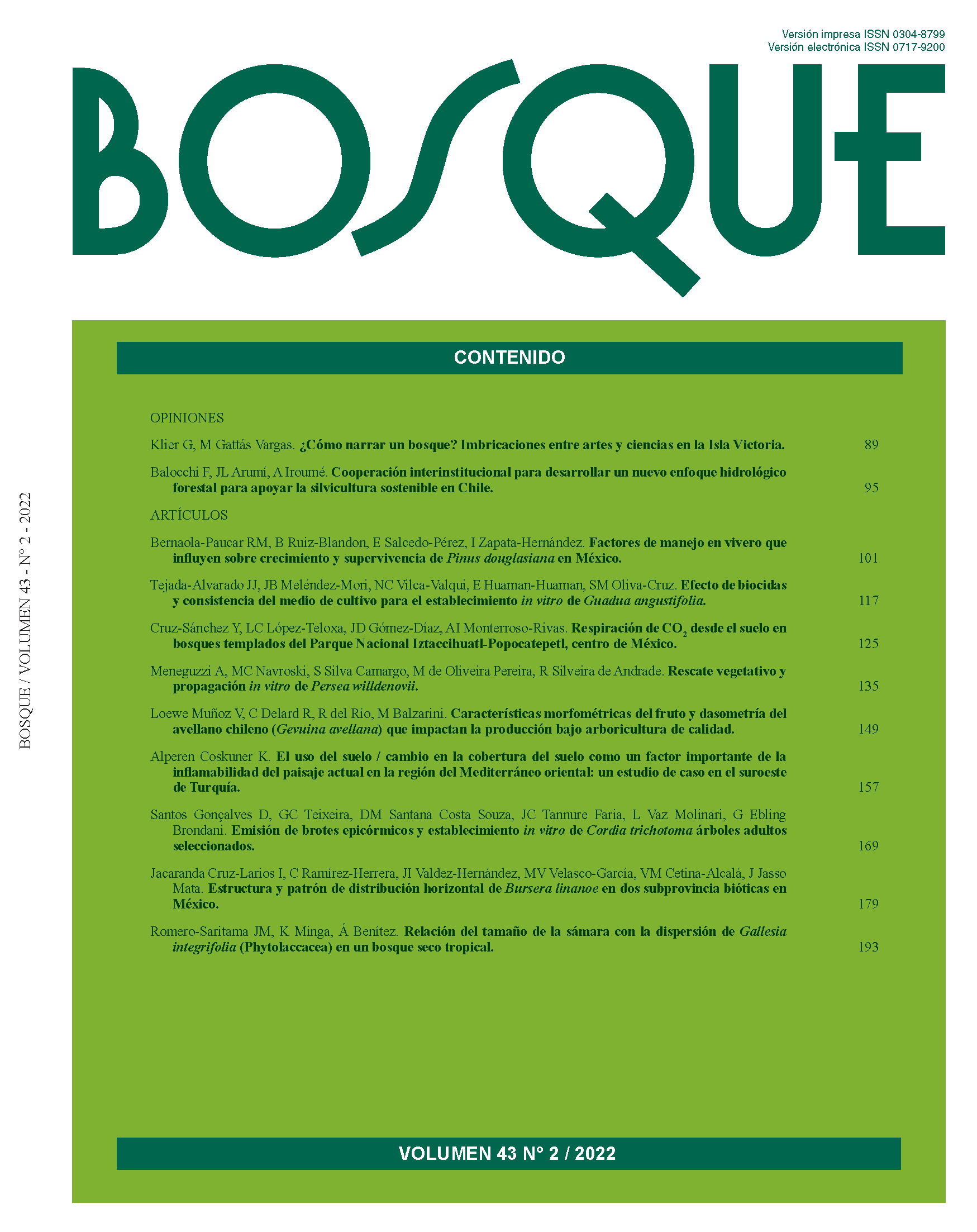Relationship of samara size with dispersal of Gallesia integrifolia (Phytolaccacea) in a tropical dry forest
Main Article Content
Abstract
Dispersion is a key element in plant life, allowing them to colonize and establish in new environments. The morphological traits involved in structures specialized in species dispersal play an important role in this process. In this work, the relationship between samara size and the distance and dispersion speed of Gallesia integrifolia in an enclosed environment and one with the presence of wind, at two experimental heights, was analyzed and compared. Results showed high variation and correlation among the morphological samara traits. Positive and significant relationships between the samaras dimensions were evident with the distance and speed of flight at one and two meters high in the open environment. On the other hand, a defined pattern for the enclosed environment was not found, resulting in negative relationships in the size of samaras with the distance and speed of flight at the height of one meter. Knowing the effect of morphological traits on dispersal contributes to a better understanding of seed ecology based on the morphological traits of samaras, understanding current species dispersal and distribution processes, and knowing the ability of forest plants to cope with potential future climate change scenarios in dry forests.

